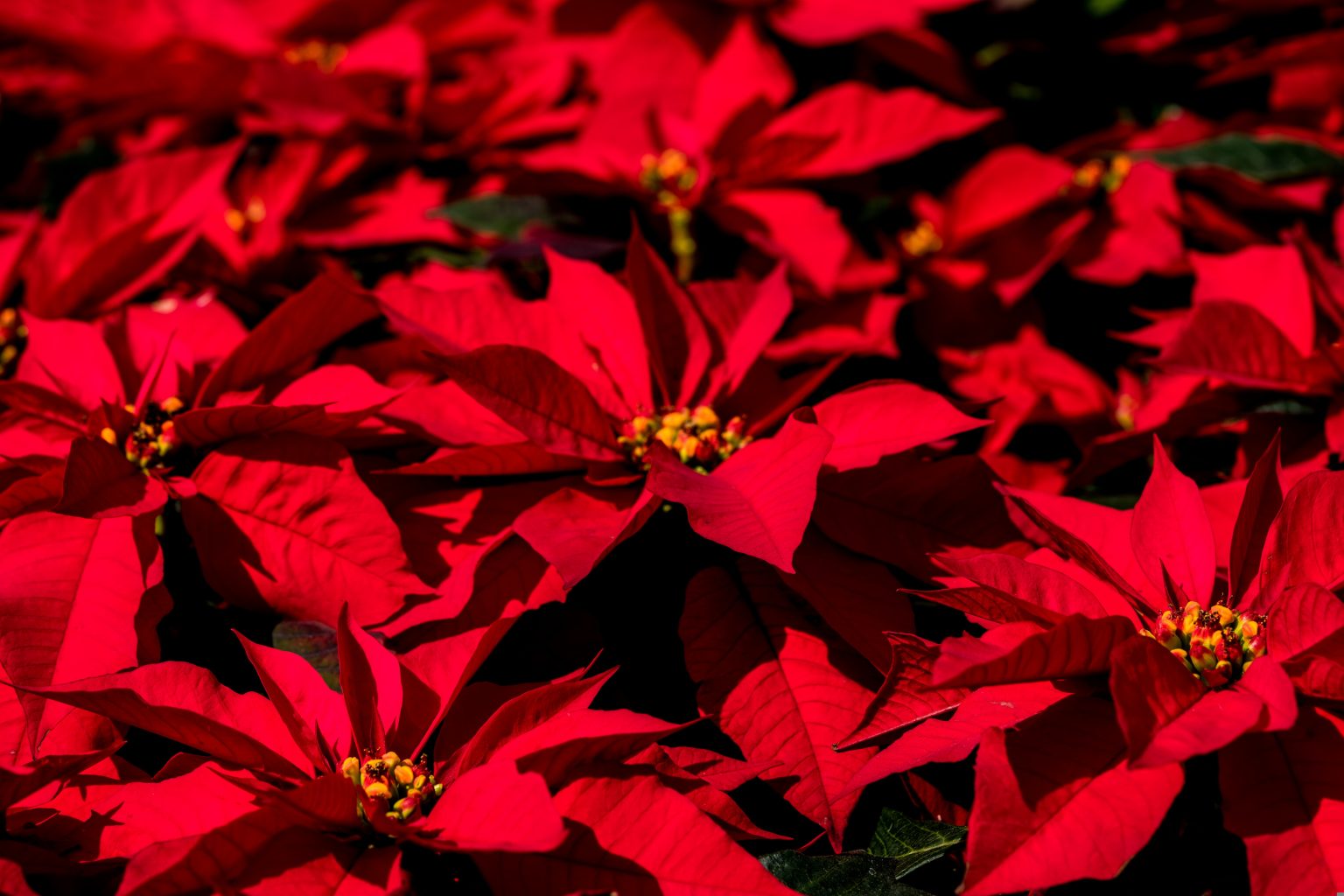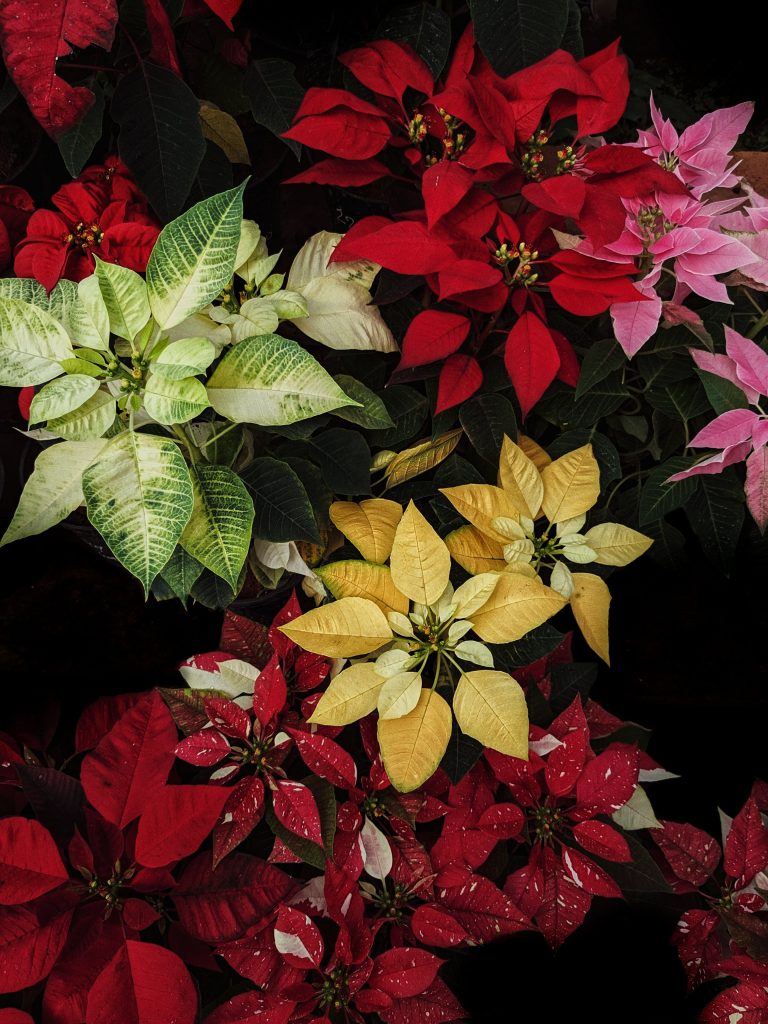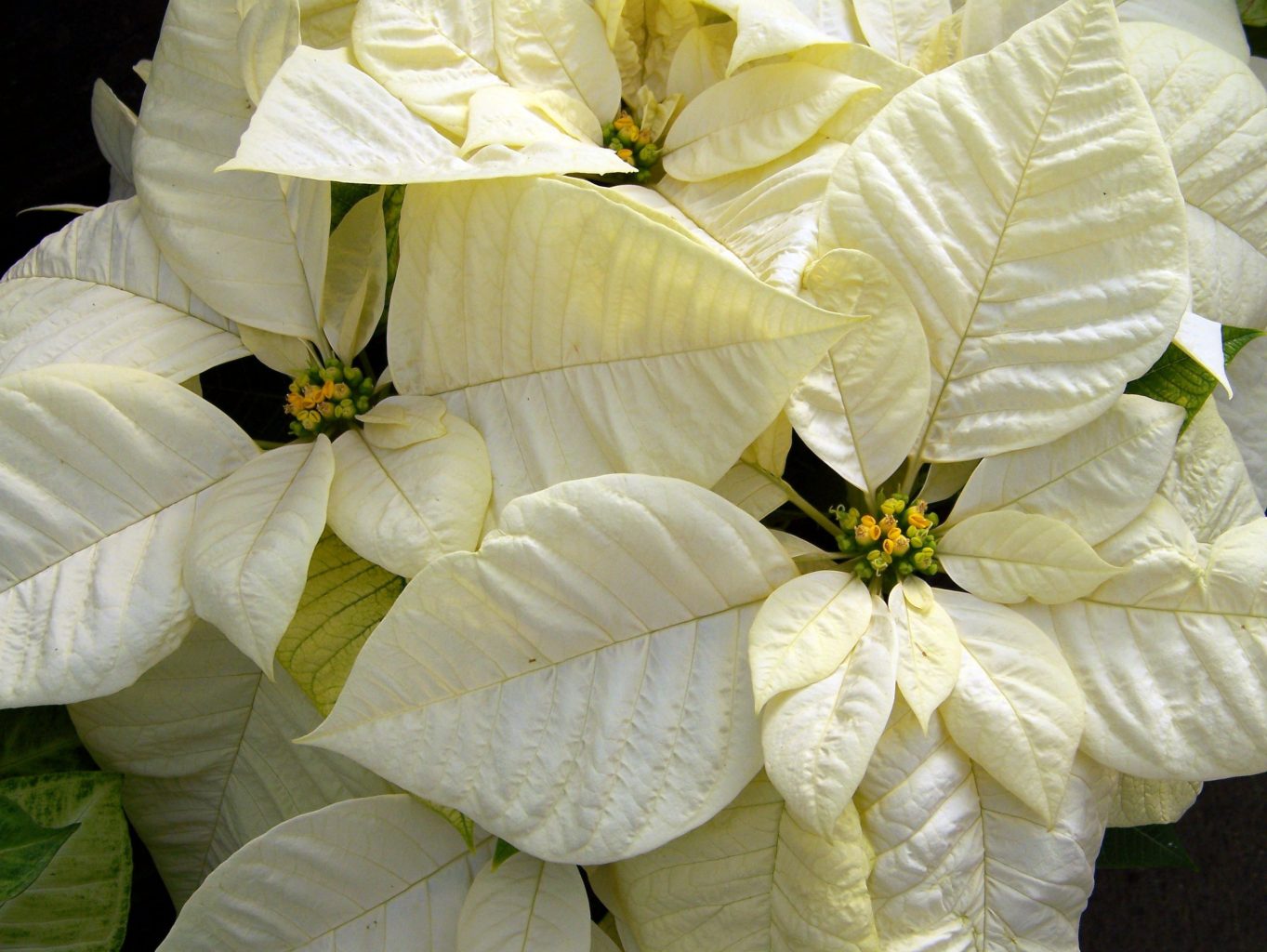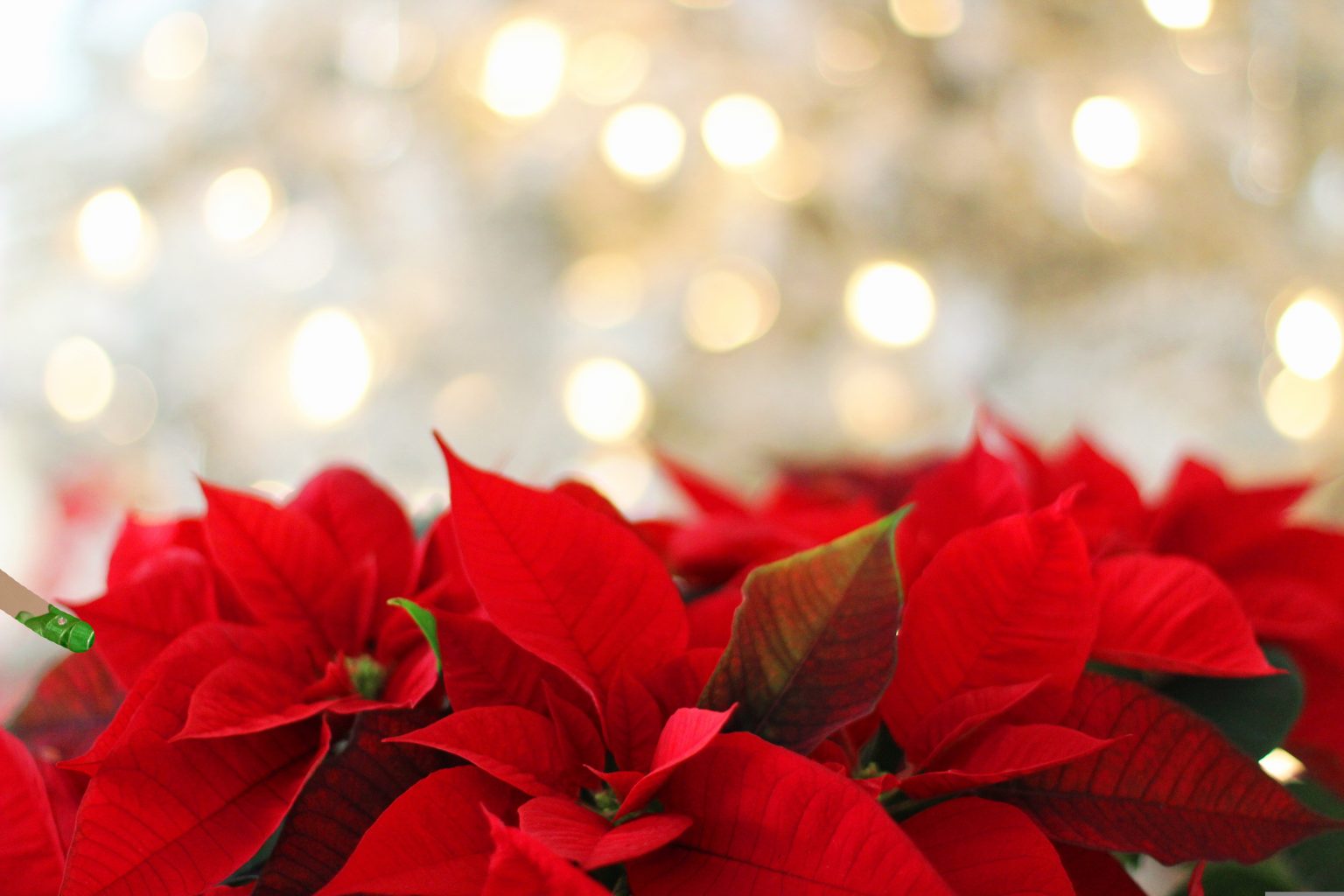
The gorgeous Christmas plant we know as Poinsettia had its origins in Central America, especially southern Mexico. These beauties were cultivated by the Aztecs long before Europeans arrived in the Americas. The Aztecs used them, not only for decoration, but also as red/purple dye for cosmetics, crafts and clothing as well as medicine from the milky white sap (sap latex).
The Nahuatl (Aztec) language is ancient (in use since the 7th century CE) and variations of it are still used by about 1.5 million Nahua people who live mainly in Central Mexico and smaller populations in the United States. The Nahuatl name for Poinsettia is cuetlaxochitl (kwet-la-sho-she).

To the people of Mexico, the cuetlaxochitl historically symbolize red flames blossoming during the winter solstice, heralding the start of a new cycle of life. The name itself translates to “mortal flower which perishes and withers like all that is pure”.
The cuetlaxochitl was honored and seen as a divine gift to humanity to assist in re-birthing Mother Earth’s light. That is why temples were decorated with cuetlaxochitl whose flowering synchronized with the solstice and celebrations honoring the birth of Huitzilopochtli, the Left-Handed Hummingbird. Huitzilopochtli represents the sacred power of the sun and the red leaves symbolize the sacred energy of life force of blood.

The first time Joel Poinsett, a U.S. citizen, saw cuetlaxochitl they were decorating a nativity scene in a church in Taxco and the association with Christmas began. In the early 1800s cuetlaxochitl plants were taken to South Carolina by Mr. Poinsett where he continued cultivation and began gifting the plant to friends and colleagues. In the beginning many botanists dismissed cuetlaxochitl as a weed, but Poinsett continued to experiment, study and breed them until it gained acceptance as a holiday plant.
The first Poinsettias were sold to the public under its botanical name, Euphorbia pulcherrima by a Pennsylvania nursery owner. The botanical name translates to “the most beautiful Euphorbia” designating the Poinsettia as the most beautiful member of its family, Euphorbiaceae. After less than 10 years in the U.S., the name Poinsettia became the most familiar and widespread. Surprisingly, it wasn’t until the 1960s that the breeding resulted in blooms which lasted more than a few days.

It may also surprise you to know the vibrant colors of the poinsettia are not actually the flowers. The brightly colored portions are a type of colored leaf called a bract. Within the center of the circle of bracts are tiny clusters of yellow and pink which are actually the flowers; they are called cyathia.
Although the rich and vibrant red is the most familiar color, there are more than 100 varieties of poinsettias ranging from red, pink, apricot to yellow, cream and white. If you were to see a blue poinsettia, it would have likely been created through dye or paint rather than a natural process.

Euphorbia pulcherrima (pictured above) is the most common in the western world it has a counterpart in the east called Da Ji (E. pekinensis) which is used in Traditional Chinese Medicine. In the West the medicinal uses are mostly centered on the Lungs and Large Intestine. Da Ji translates to “Big Spear from the Capitol” and is used on the Kidney, Large Intestine, Lung and Heart meridians. In the west, the leaves and crushed flowers are generally utilized while the Chinese typically use the root.

There is an old legend in which a poor Mexican girl named Pepita found herself unable to present anything to the baby in the nativity scene at the Christmas Eve services. On the way to the services, her relative counseled her that it did not have to be a big gift, anything given with pure intention was just as significant. Taking his counsel, Pepita picked a bouquet from the weeds on the roadside.
As Pepita knelt and presented the little bouquet near the bottom of the nativity scene, she straightened her spine as reminded herself of her relative’s words about intention. Suddenly her little bouquet burst into flame-red flowers and everyone who saw knew it was a miracle. From that day, the flowers were known as “Flowers of the Holy Night”.
